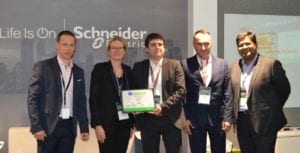Healthcare organizations face unique challenges because of the essential and often critical nature of the services they provide to patients. The impact of COVID and the ongoing climate crisis have added pressures that impact the ability of healthcare organizations to provide high-quality patient care, including:
- Insufficient infrastructure — 69% of healthcare facilities in the U.S. have new construction or upgrade projects planned within the next three years, and it’s estimated that the costs of deferred maintenance of U.S. healthcare facilities alone is over $243 billion.
- Workforce challenges – As experienced workers retire and worker shortages affect clinical and facility disciplines, 86% of healthcare managers identify gaps between current team knowledge and what’s needed to excel.
- Evolving patient expectations— Patient experience scores dropped precipitously during the COVID-19 pandemic and have yet to recover, and 40% of medical tourists seek better-quality treatment than they can find locally.
- Increasing cost pressures – U.S. health expenditures are projected to be $370B higher by 2027.
- Decarbonization acceleration – The healthcare sector contributes 5% of total greenhouse gas (GHG) emissions. Learn more in my new podcast.
So, what can healthcare organizations do in light of these challenges? How can they address the demands and alleviate pressure to do more with less?
The answer is two-fold: digitalization and electrification. Adopting flexible digital infrastructure is key in supporting these organizations in meeting their challenges.
At Schneider Electric, we partner with healthcare organizations to design and deliver digital solutions that are ready for today and flexible for tomorrow. We call this ‘enabling the healthcare facility ahead of its time.’ Prioritizing digitalization and electrification makes this possible to deliver essential healthcare outcomes to enhance patient safety and experience while reducing operating costs.

Four essential outcomes for healthcare
In collaboration with our customers, we’ve identified four essential outcomes for healthcare organizations to address today’s complex demands.
1. Resilient – Many healthcare facilities are limited by aging infrastructure and legacy systems, leaving them vulnerable to weather events, cyberattacks, power outages, and more.
Drawing on our expertise in dynamic power distribution, critical asset management, and cybersecurity protocols, our healthcare digital solutions and services enhance patient and staff safety and infrastructures against the most serious threats.
Following an increase in major storms and natural disasters, the Daughters of Mary campus, U.S., sought to better ensure their power reliability, efficiency, and sustainability on their legacy campus. They expanded their existing solar infrastructure using state-run funding programs, integrating an advanced microgrid solution developed with Citizens Energy Corporation, which:
- Is the state of Connecticut’s first microgrid capable of operating on 100% renewable energy even in island mode, ensuring power loads during blackout conditions.
- Generates ~500 thousand kilowatt hours (kWh) of additional solar energy each year, equivalent to powering ~45 homes annually.
- Provides up to 19 days of continuous backup power with additional battery storage, ensuring service continuity during outages.
2. Efficient—Efficiency talks often center around resources like infrastructure, assets, energy, and systems. Outdated systems continue to foster siloed data and departments, poor space usage unnecessarily wastes energy and resources, and reactive maintenance programs increase costs.
By centralizing clinical and facility systems, we help optimize hospital operations, ensuring efficient asset, energy, and space management for high-performing facilities.
Faced with a twofold increase in energy bills and a campus that had doubled in size in 40 years, The Lille University Hospital (“CHU de Lille”), France, needed to gain greater control over energy costs and secure its electrical installations.
By modernizing and connecting critical infrastructures across high- and low-voltage electrical equipment and meters, combined with power monitoring software, CHU de Lille achieved:
- Centralized data to enable a predictive maintenance strategy
- A reliable and uninterrupted power supply providing 24/7 uptime
- A predicted 15% reduction in energy consumption
3. Care-centric—Many healthcare facilities struggle with maintaining/repairing aging infrastructures that could threaten safety, outdated technologies, and systems limiting patient autonomy, comfort, privacy, and satisfaction, while staffing shortages and time-consuming administrative work burden clinicians.
Integrated digital solutions provide opportunities to streamline workflows and empower increased patient autonomy to improve the experiences of patients, visitors, and staff.
At The Pavilion at Penn Medicine, U.S., the project team was tasked with building a hospital capable of delivering top-notch patient care, adaptable to the future and without data silos. Deploying an integrated building solution benefits all hospital users, for example:
Patients are empowered to control their environment preferences – temperature, lighting, window shades, and privacy – via automated technology to:
- Help minimize falls by giving patients the ability to control room settings from the bed
- Contribute to a 2x improvement in Hospital Consumer Assessment of Healthcare Providers and Systems (HCAHPS) scores
Clinicians benefit from:
- Reduced nurse calls by empowering patients to control their environment
- Enhanced clinical workflows by integrating information sharing across siloed systems
Additionally, integrating components of multiple systems (e.g., monitors, cameras, microphones) achieved a 5% CapEx saving.
4. Sustainable – As a 24/7 energy-intensive operation, many hospitals still rely on non-renewable fossil fuel energy sources. Rising fuel prices and energy costs constrain operating budgets, while carbon reduction plans are only in their early stages, creating urgency for action.
By engaging with the right partners, healthcare organizations can substantially advance their sustainability journeys by accessing consulting services, software, and premium products that support decarbonization, smart energy management, and the transition to the all-electric healthcare campus. Learn more about sustainability opportunities in my new podcast.
Italy’s USL Toscana Nord Ovest Versilia Hospital sought to become a point of excellence in energy savings and operational efficiency across the country—their strong sustainability focus aimed to address CO2 emissions, energy consumption, and waste.
Tecnoservice, a partner of our EcoXpert™ network specializing in energy efficiency solutions, started with integrating building management systems (BMSs) in their 13 hospitals and territorial structures, enabling real-time access to advanced data analytics.
In the 1st year, this work helped the hospital achieve :
- 40% savings in energy and heat consumption
- 41% annual CO2 reduction
The anticipated long-term benefits include:
- Management and maintenance cost reduction
- Ability to analyze the data in search of waste and signs of malfunction, identify problems more quickly, and intervene in the event of failures.
Partnership bridges today’s and tomorrow’s healthcare facility needs
Healthcare organizations need partners to help them achieve the resilience, efficiency, sustainability, and high levels of patient care they strive to deliver. With the right support, expertise, and planning tools, the entire building system infrastructure can be optimized. Digital technologies can unify disparate systems to enhance operational performance and help you reach your goals around improved clinical outcomes, reduced operating costs, smart energy management, and infrastructure resilience.
To learn more about how you can capitalize on the digitalization trend in healthcare, download our interactive eGuide, “Digitalization and electrification: Solutions enabling the healthcare facility ahead of its time,” and experience our digital solutions in action with real-life scenarios and success stories from healthcare customers.



Add a comment